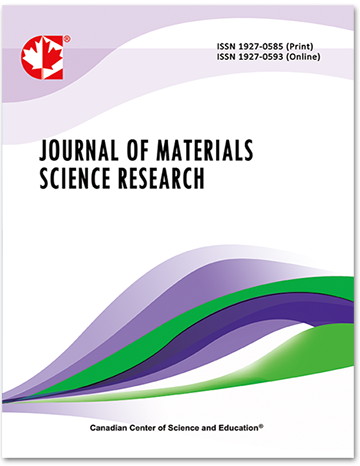Study of Martensitic Transformation in 304L Austenitic Stainless Steel after Tensile and Low Cycle Fatigue Tests
- Gláucio Soares da Fonseca
- Silvana Carreiro de Oliveira
- Jéssica Gadêlha Chaves
- Pedro Pena Leite
- Fabiane Roberta Freitas Da Silva
- Luiz Carlos Rolim Lopes
Abstract
There are many studies on austenitic stainless steels with transformation induced plasticity (TRIP). Basically, in these steels, there is a significant increase in strength and toughness with the transformation of austenite to martensite. 304L steel finds extensive application in industry. Studies relating to martensitic transformation with plastic deformation are quite common. Many studies involve monotonic loading relating to the martensite formed. In practice, 304L steels are subject to distinct types of loading and possibly with stress concentrators. Thus, also in smaller quantities, it is possible to find in the literature studies involving cyclic loading with the TRIP effect. To contribute to the literature on the analysis of the TRIP effect on these steels, 304L steel samples with stress concentrators underwent interrupted monotonic tensile tests. Optical microscopy (OM) and x-ray diffraction (XRD) technique characterized the martensitic transformation. Other 304L steel samples with a stress concentrator underwent a low cycle fatigue test. The martensitic transformation, in this case, was possible to follow with the electron backscatter diffraction technique (EBSD). The samples after the interrupted monotonic tests show a high martensite volume fraction formed 1mm away from the notch (30% to 50%), due to the plastic deformation suffered. From 5.5mm of the notch, the samples again display a microstructure like that of the as-received (AR) sample. For the low cycle fatigue tested sample, the high concentration of deformation-induced martensite was within 15mm of the discontinuity. Approximately 0.5mm from the circular discontinuity, the sample again has a microstructure like the initial sample (IS).
- Full Text:
 PDF
PDF
- DOI:10.5539/jmsr.v9n1p22
Journal Metrics
Impact Factor 2022 (by WJCI): 0.583
Google-based Impact Factor (2021): 0.52
h-index (December 2021): 22
i10-index (December 2021): 74
h5-index (December 2021): N/A
h5-median (December 2021): N/A
Index
- CAS (American Chemical Society)
- CNKI Scholar
- Elektronische Zeitschriftenbibliothek (EZB)
- EuroPub Database
- Excellence in Research for Australia (ERA)
- Google Scholar
- Infotrieve
- JournalTOCs
- LOCKSS
- NewJour
- PKP Open Archives Harvester
- Qualis/CAPES
- SHERPA/RoMEO
- Standard Periodical Directory
- Universe Digital Library
- WJCI Report
- WorldCat
Contact
- John MartinEditorial Assistant
- jmsr@ccsenet.org
